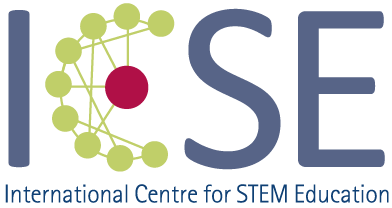From Gourmet Restaurants to Care Homes
by Dr. Peter Steurer
Food Trends
Molecular Cuisine, which has its roots in haute cuisine, offers numerous possibilities for the preparation and presentation of food. A well-known example is alginate pearls, known as “fruit caviar,” which have become popular among young people as “popping boba” in bubble tea.
Based on food technology insights and tools, specific adjustments can be made to the textures, flavor dimensions, and appearance of foods. Molecular Cuisine combines culinary creativity with scientific learning and offers an exciting, interdisciplinary approach to topics such as chemistry, physics, and nutrition in the educational sector.
The heyday of Molecular Cuisine about 15 years ago was closely linked to top chefs like Ferran Adrià, and subsequently, some techniques found their way into the everyday culinary practices of fine dining. These include techniques such as sous-vide cooking and espumas.
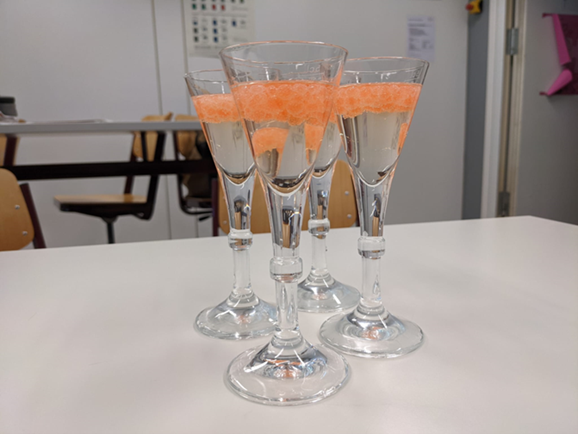
Non-alcoholic Aperol caviar in non-alcoholic sparkling wine — still beautiful.
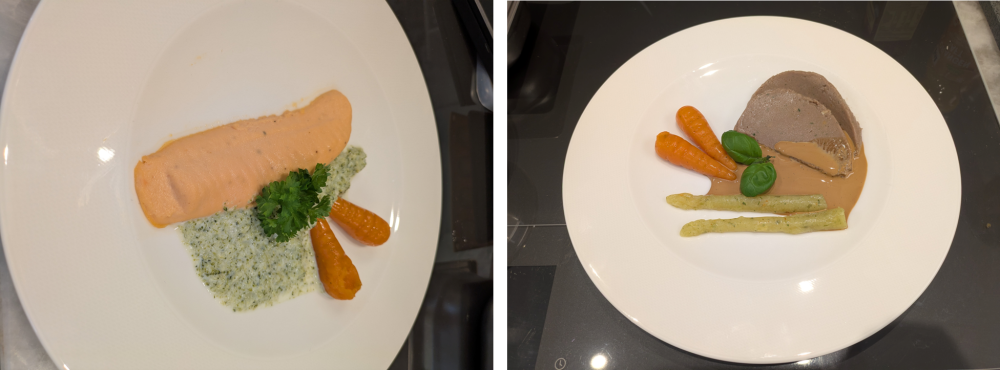
Salmon with broccoli foam and carrots, as well as asparagus with beef and carrots in sauce – each reshaped and exceptionally tasty!
Molecular Cuisine meets Medical Nutrition
In recent years, a new field of application has opened up.
Molecular Cuisine’s intensive focus on creating adapted textures, extracting flavor essences, and a deep understanding of the chemical-physical processes underlying food preparation provides the ideal foundation for preparing customized yet appealing meals in the complex field of medical nutrition. It can offer people with pathologigcal swallowing difficulties (dysphagia) a diet tailored to their needs. These difficulties can occur, for example, after strokes, with neurodegenerative diseases, or as part of the aging process. In Germany, about five million people are affected; among those over 75, around 45 percent show relevant symptoms.
Application in an Open Schooling Project
An example of its use in education is a ICSE Science Factory open schooling project at the vocational schools in Wolfach, Germany. As part of a teaching unit, students received an overview of the topic of dysphagia and some fundamentals of Molecular Cuisine. They conducted the IDDSI drip test to discuss the concept of viscosity and prepared a menu for seniors with swallowing difficulties. The menu was well-received and demonstrated how Molecular Cuisine can contribute to improving quality of life.
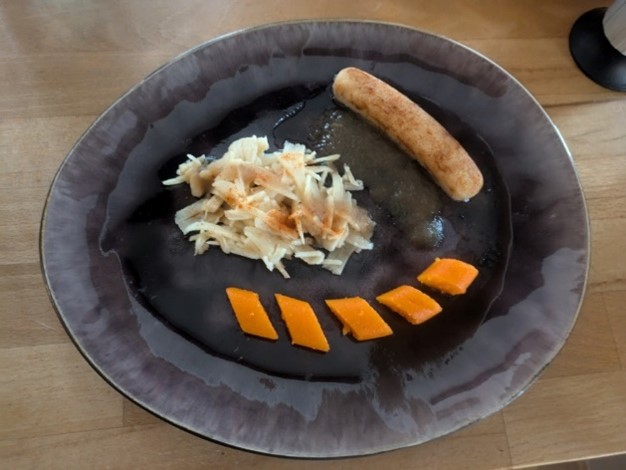
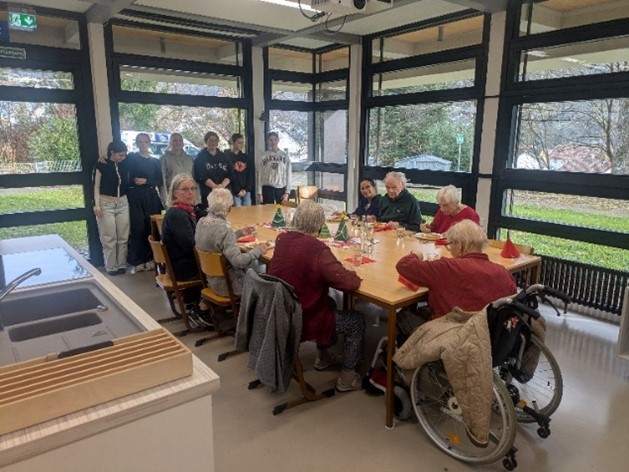
The test tasters from Hausach and the main course: bratwurst with potato rösti and Vichy carrots – cooked, pureed, and restructured.
Conclusion
The topics of food preparation, nutrition, and health are perfectly suited for conducting interdisciplinary lessons with STEM subjects. Especially the new trends of using techniques from Molecular Cuisine in the field of care highlight the connections between the individual subject areas.
